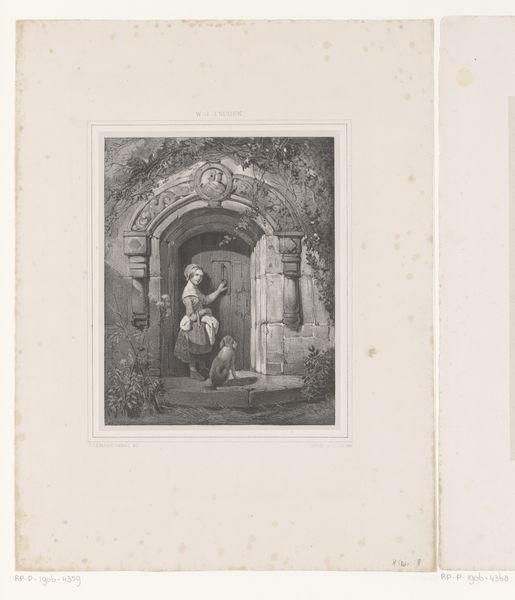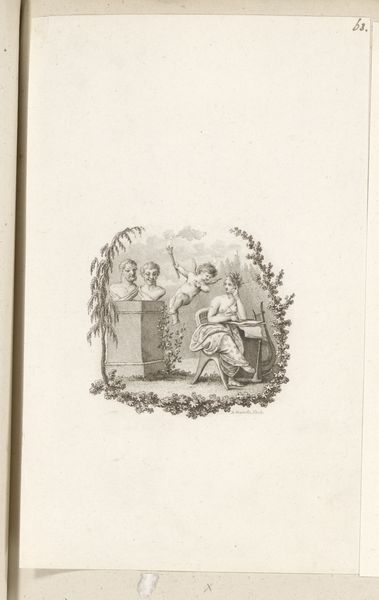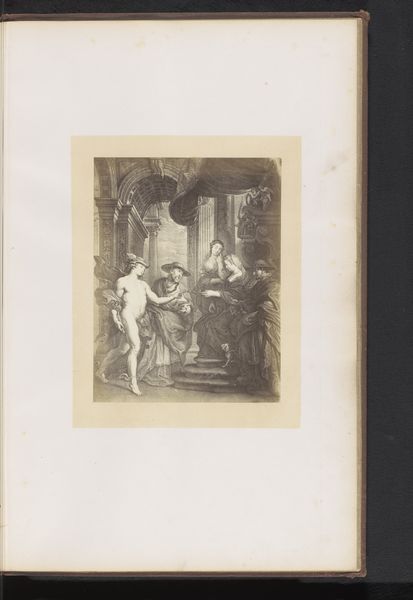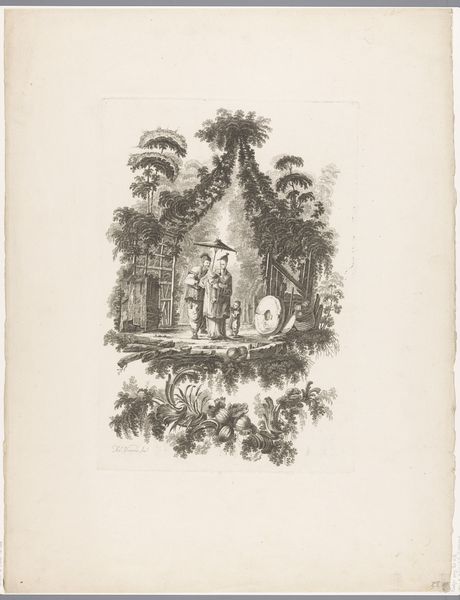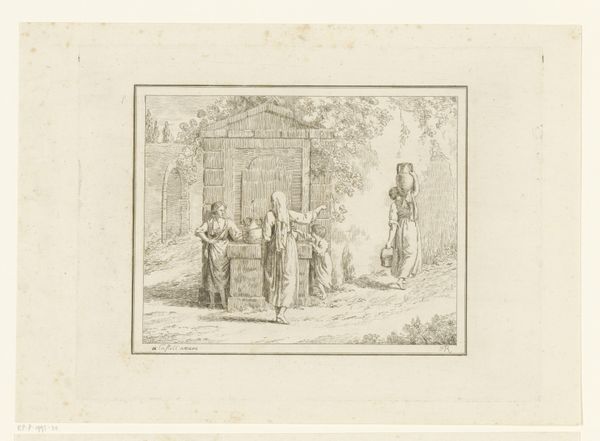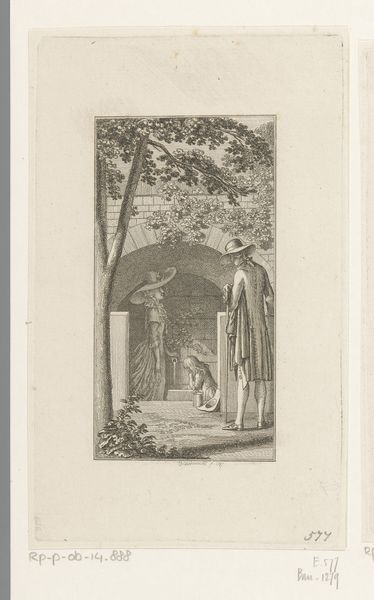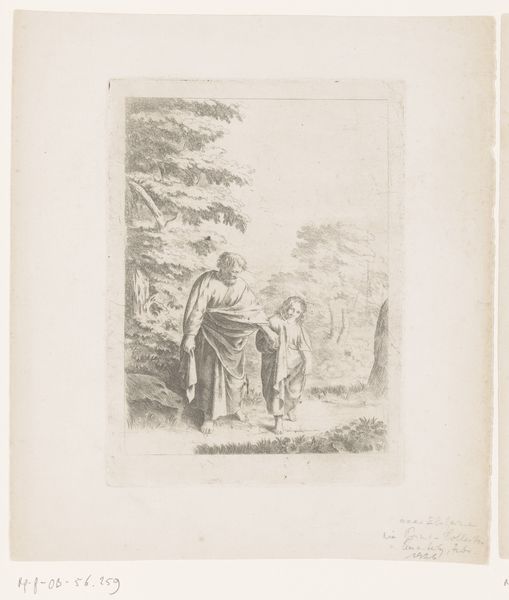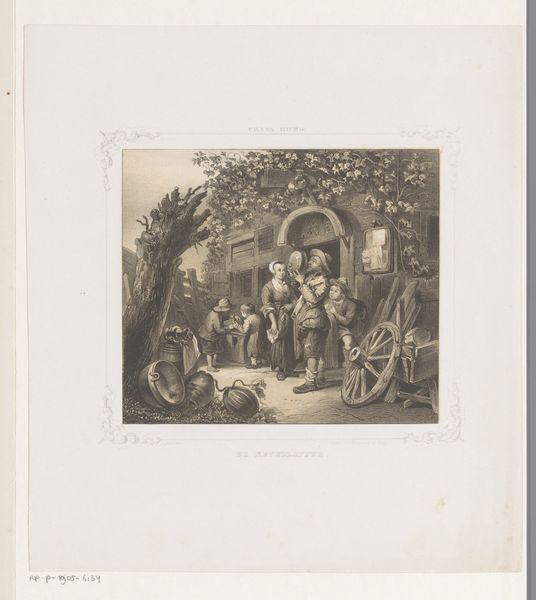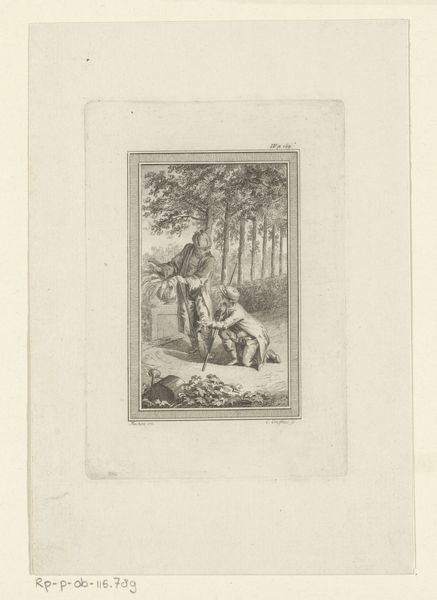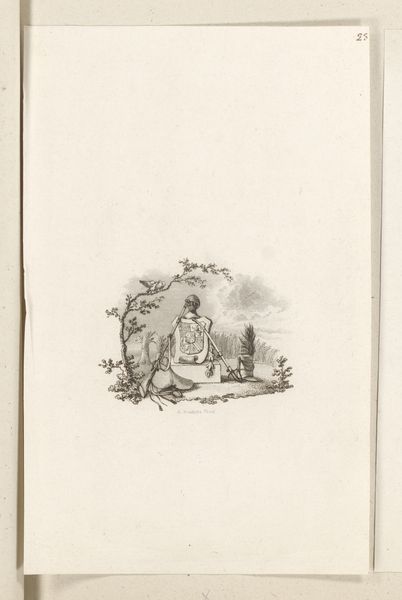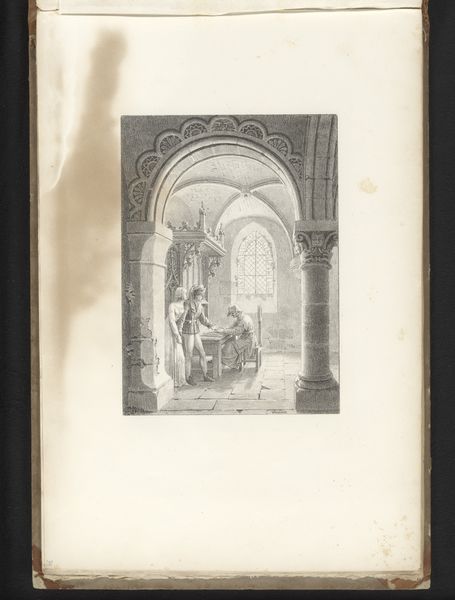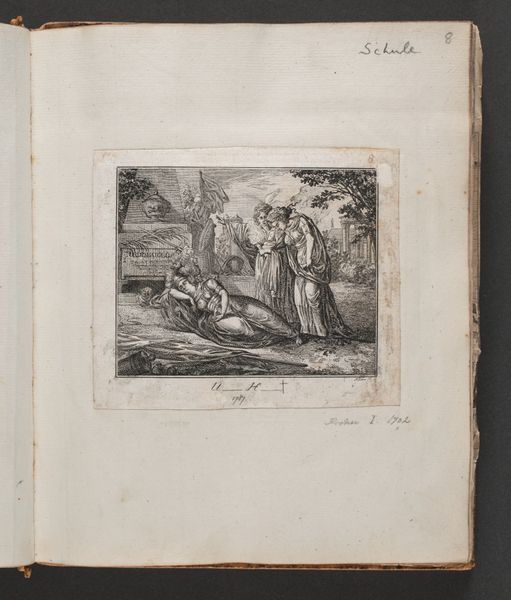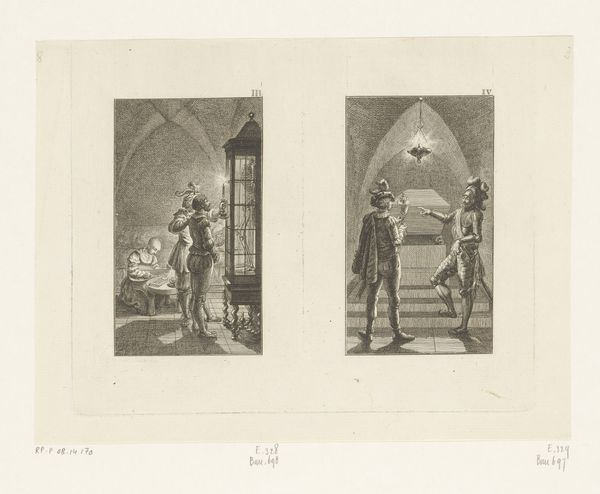
drawing, paper, ink, engraving
#
drawing
#
landscape
#
figuration
#
paper
#
ink
#
romanticism
#
genre-painting
#
engraving
Dimensions: height 256 mm, width 153 mm
Copyright: Rijks Museum: Open Domain
Curator: Reinier Vinkeles created this delicate drawing in 1815, titled "Man en jongen in een bos," or "Man and Boy in a Forest." It's an engraving in ink on paper and currently held in the Rijksmuseum. Editor: There's a wistful quality to this piece. It’s quite small, contained, like a vignette, and the muted tones contribute to a subdued mood. What do you make of it? Curator: Vinkeles, primarily an engraver, frequently depicted scenes that blurred genre painting with landscape. Looking closely at the process of engraving, you notice the lines creating the shadows and depth. These finely etched marks are built up through skillful manipulation to build the overall image from simple material. It really highlights his labor. Editor: Right, it does draw attention to the act of creation, but let's think about those figures. Their interaction, or lack thereof, raises some interesting questions. Is the boy an apprentice? A son? The social hierarchy is subtly displayed, isn’t it? Curator: Potentially. During this period, apprenticeship was central to workshop production; it trained craftsmen who could replicate an art style for larger public consumption. The location being a forest suggests labor may also apply outside the typical atelier setting. Editor: Precisely. Also, let’s look at Romanticism's themes of nature and individual experience. But I wonder, whose experience are we seeing? Is it the privileged gaze of the man, positioned as the central figure, or is the boy being positioned in servitude? How does it implicate those power dynamics? Curator: That's a critical lens that enhances the meaning. The engraving allowed for reproductions to proliferate quickly through the mid-19th century, changing distribution and contributing to a new consumerist market, of which Vinkeles participated directly by producing works accessible to a wide range of public audiences. Editor: Thinking about its time— post-French Revolution, pre-industrial boom – a print like this spoke to emerging anxieties and aspirations. Was it for the elite drawing room or to inspire broader notions of landscape ownership and aspiration? The man, standing upright with nice clothing, certainly has that. Curator: Ultimately, by examining its material execution in connection to that social moment, it unveils its complicated connection to material conditions during the early 19th century. Editor: Agreed, it leaves us to consider the relationships not just depicted within the image, but also the artwork’s place within shifting social currents of the day.
Comments
No comments
Be the first to comment and join the conversation on the ultimate creative platform.
